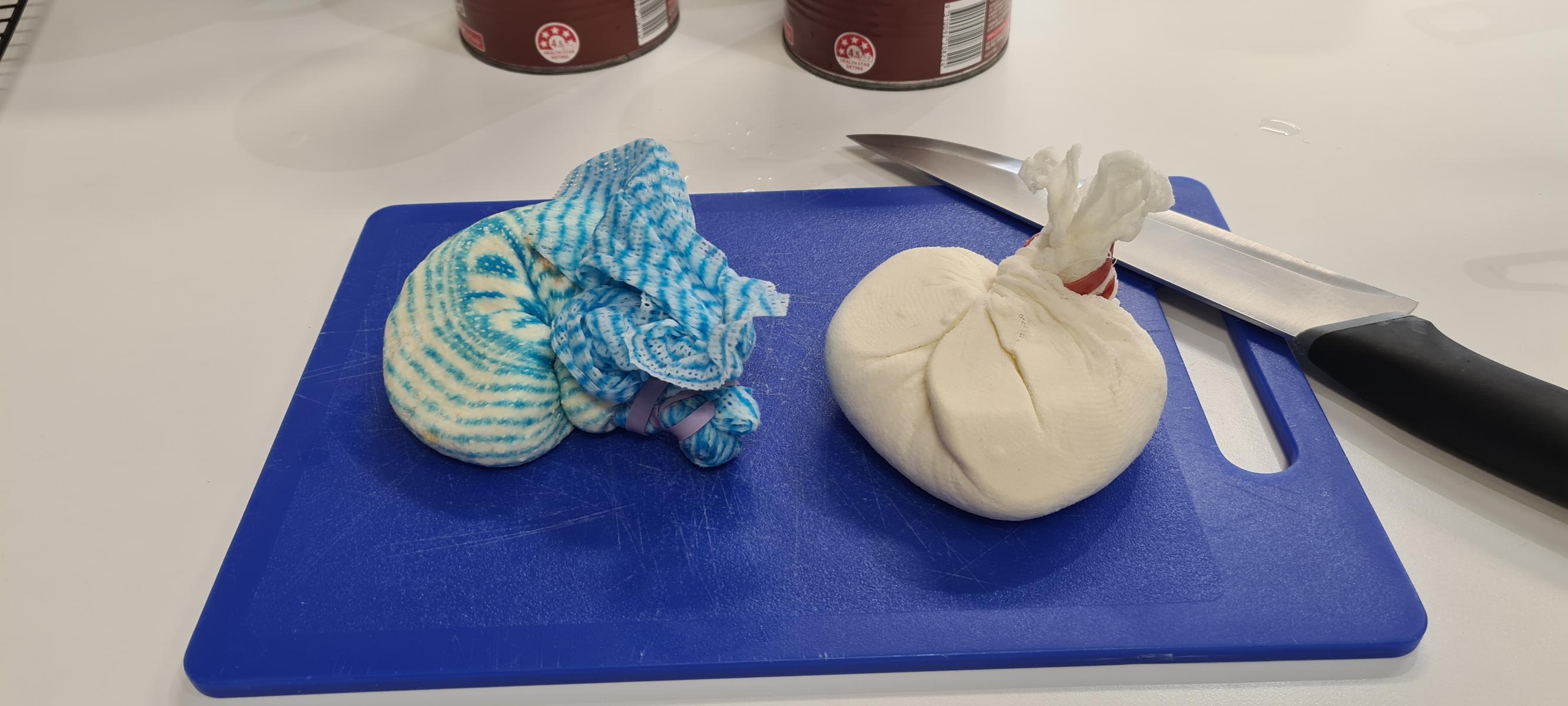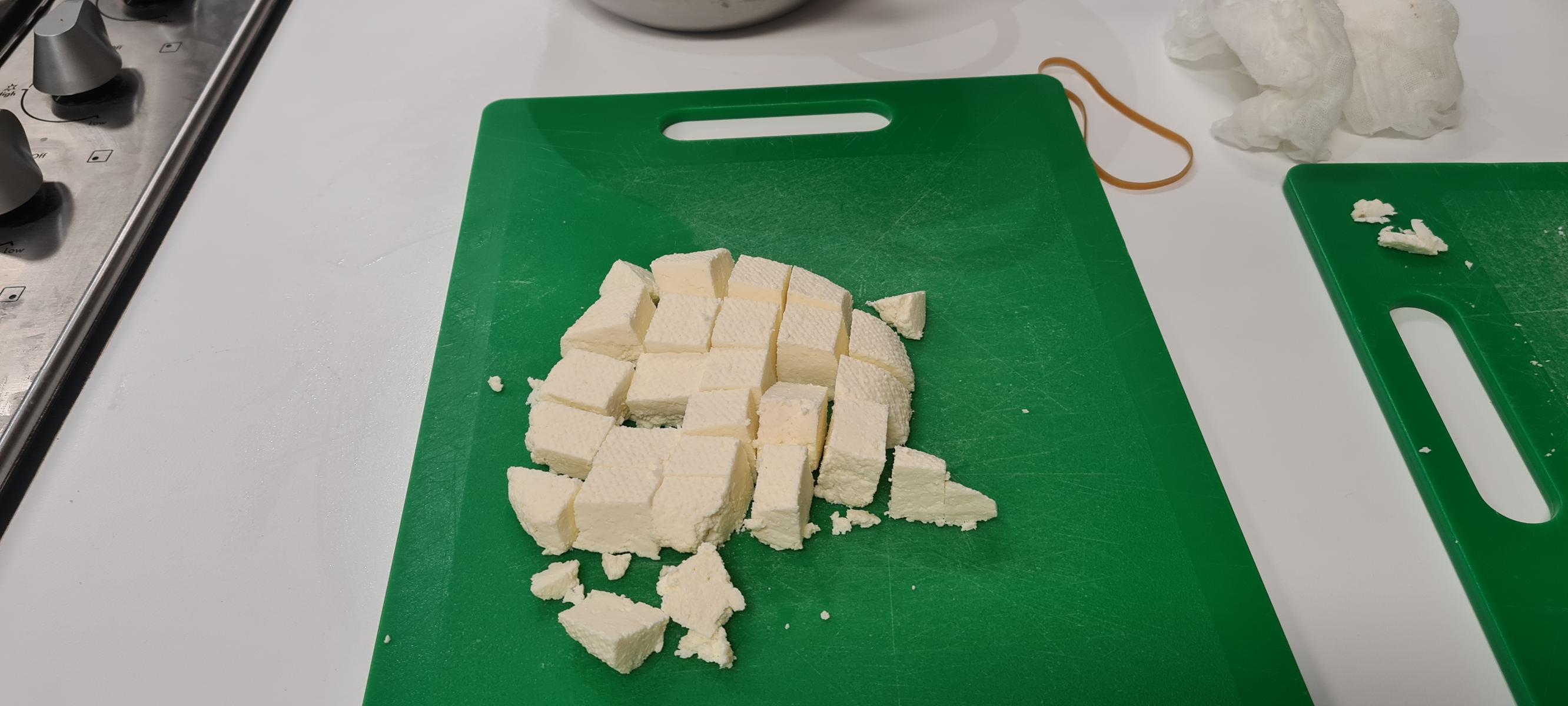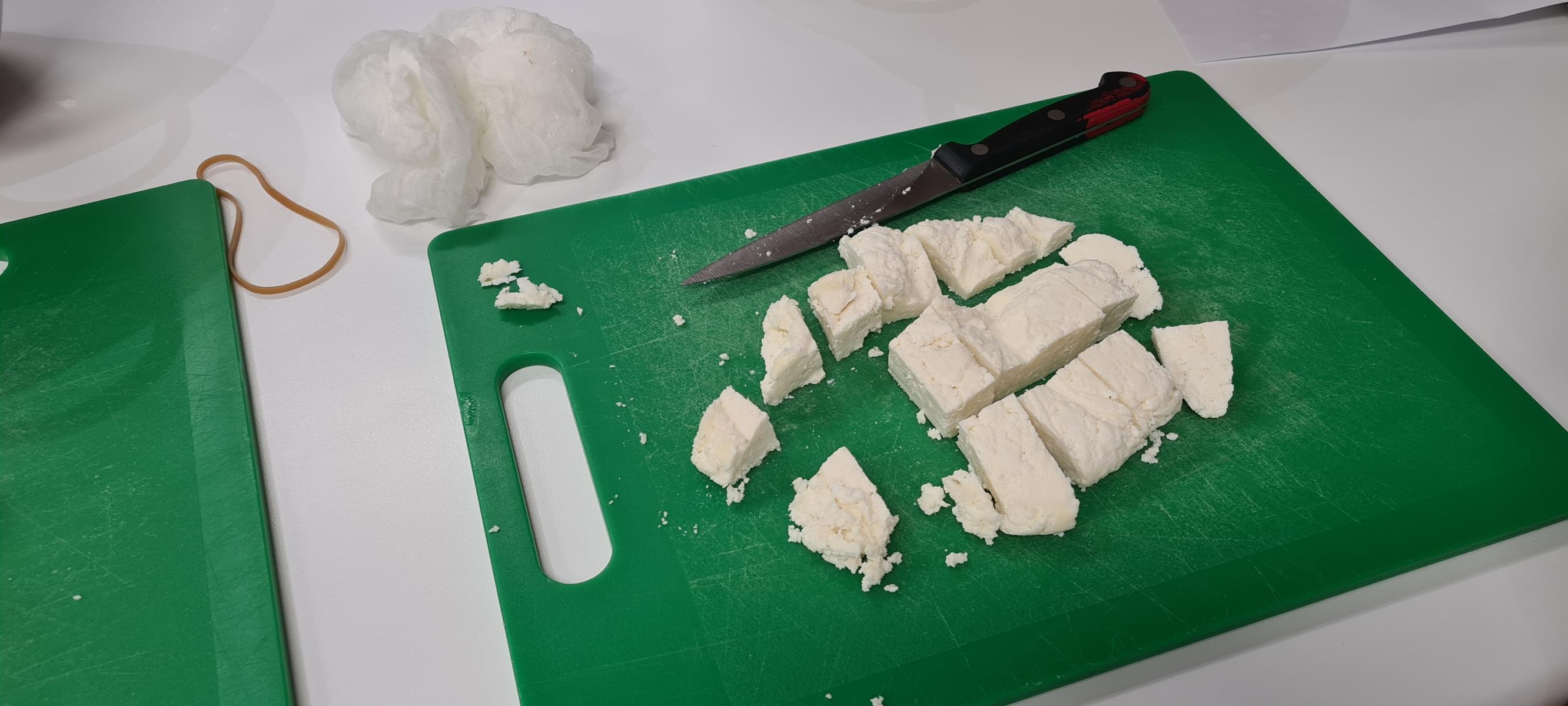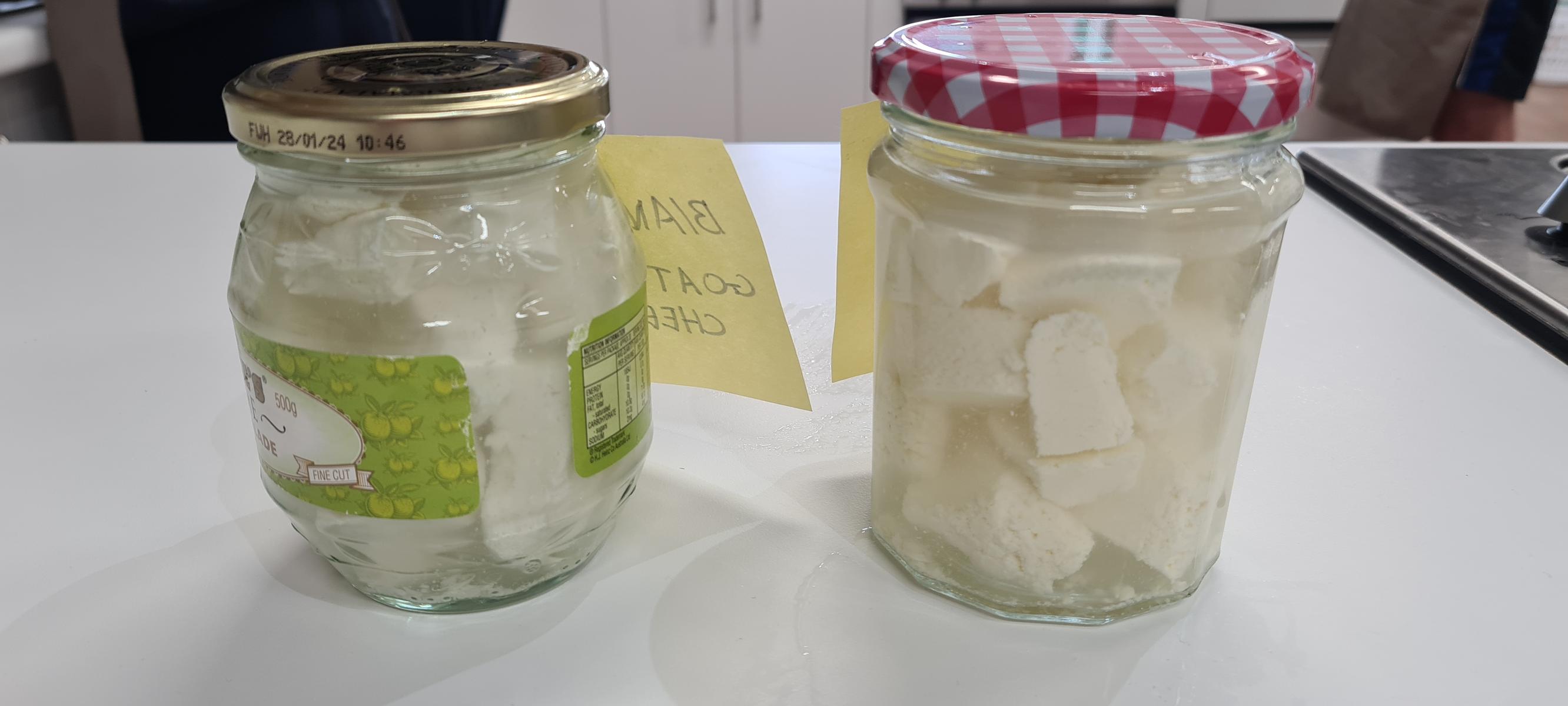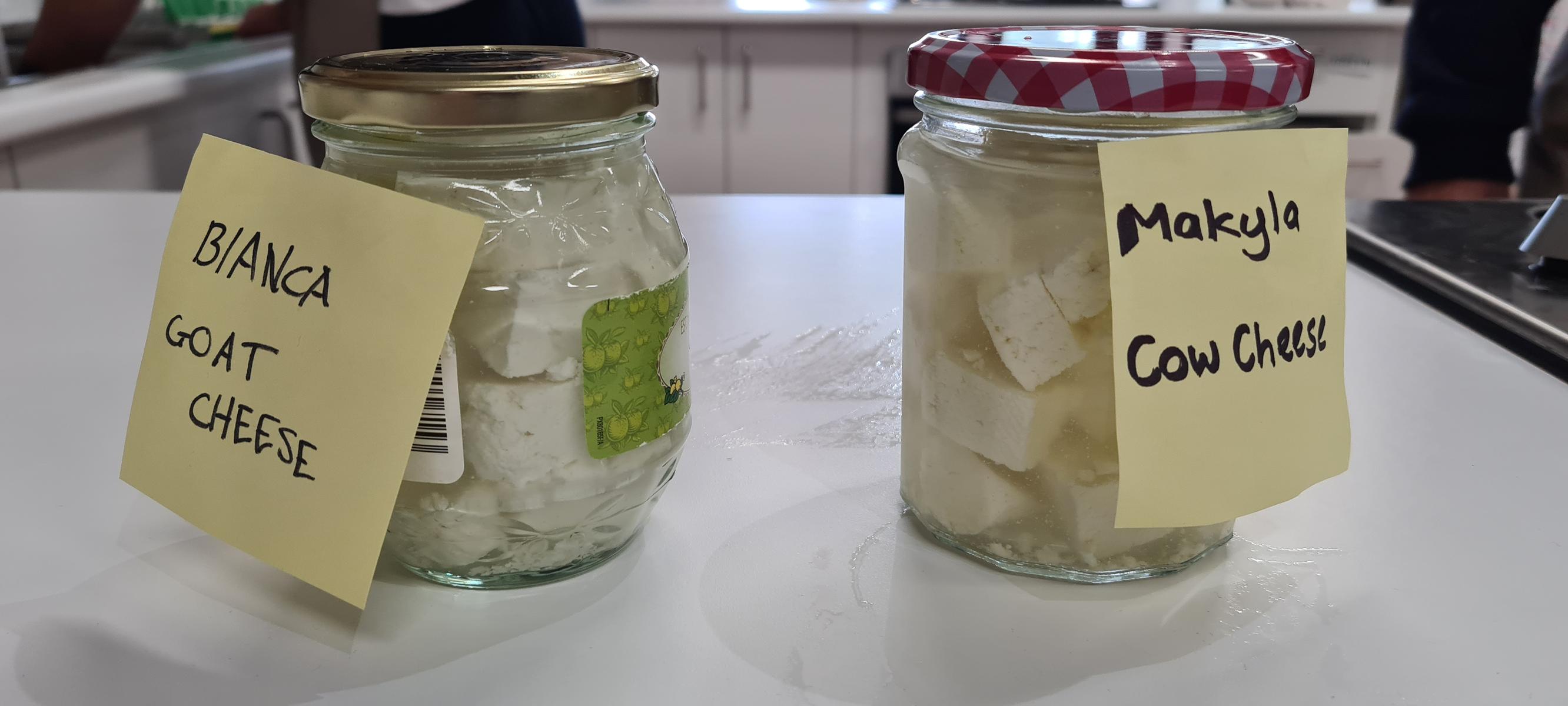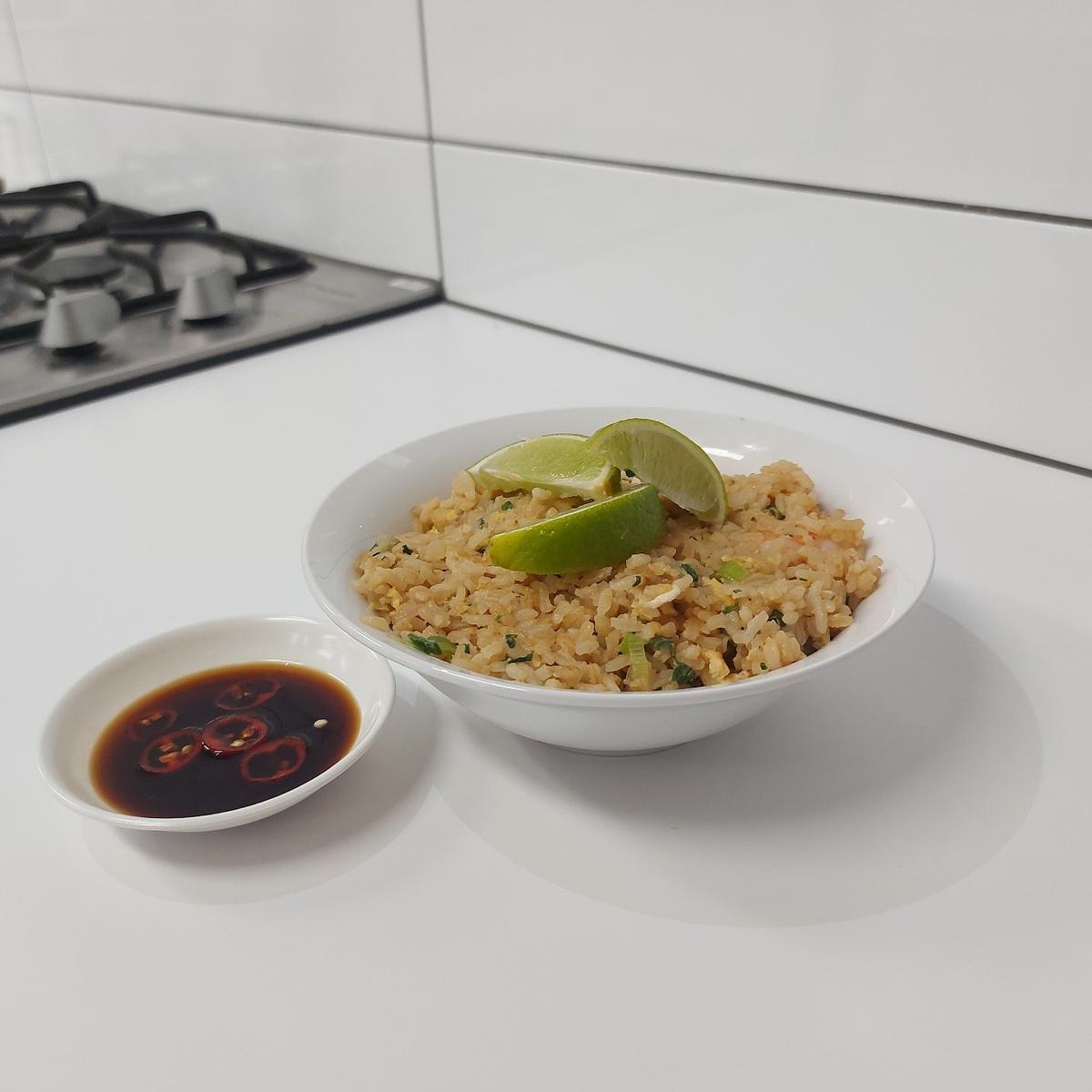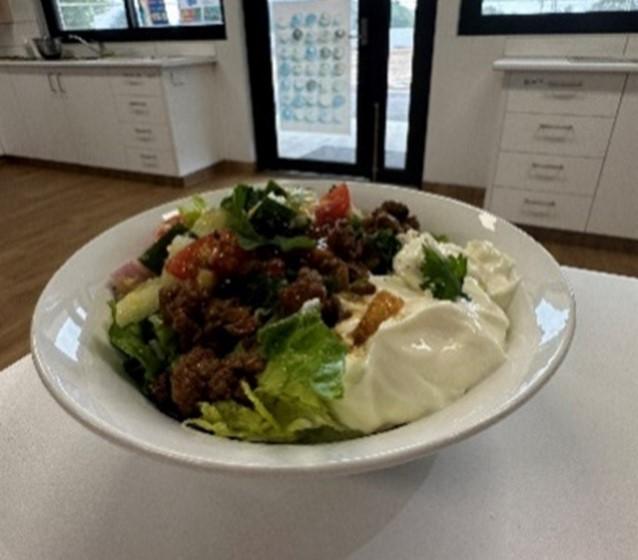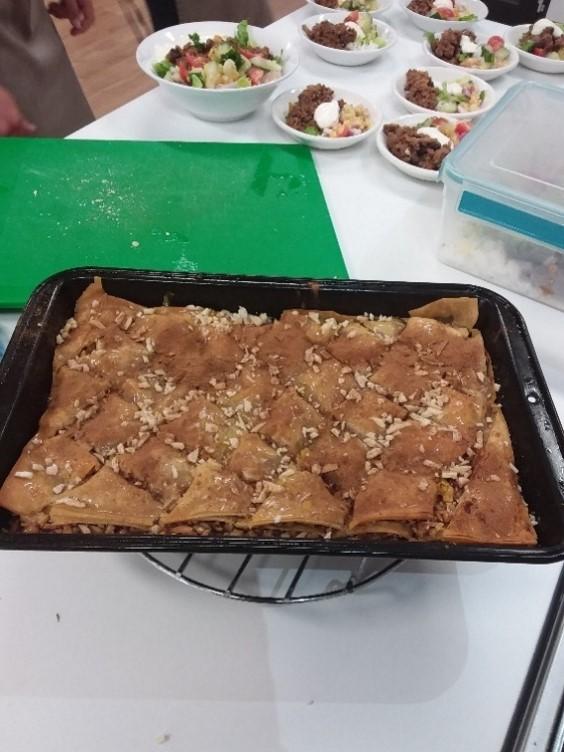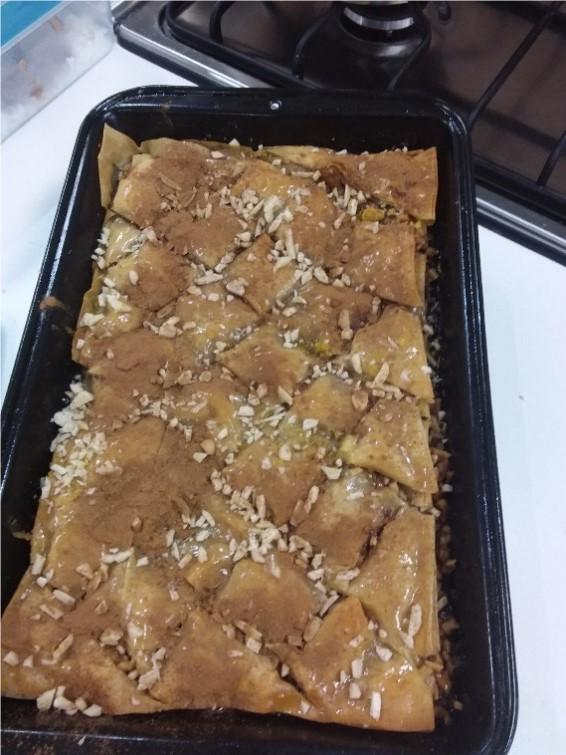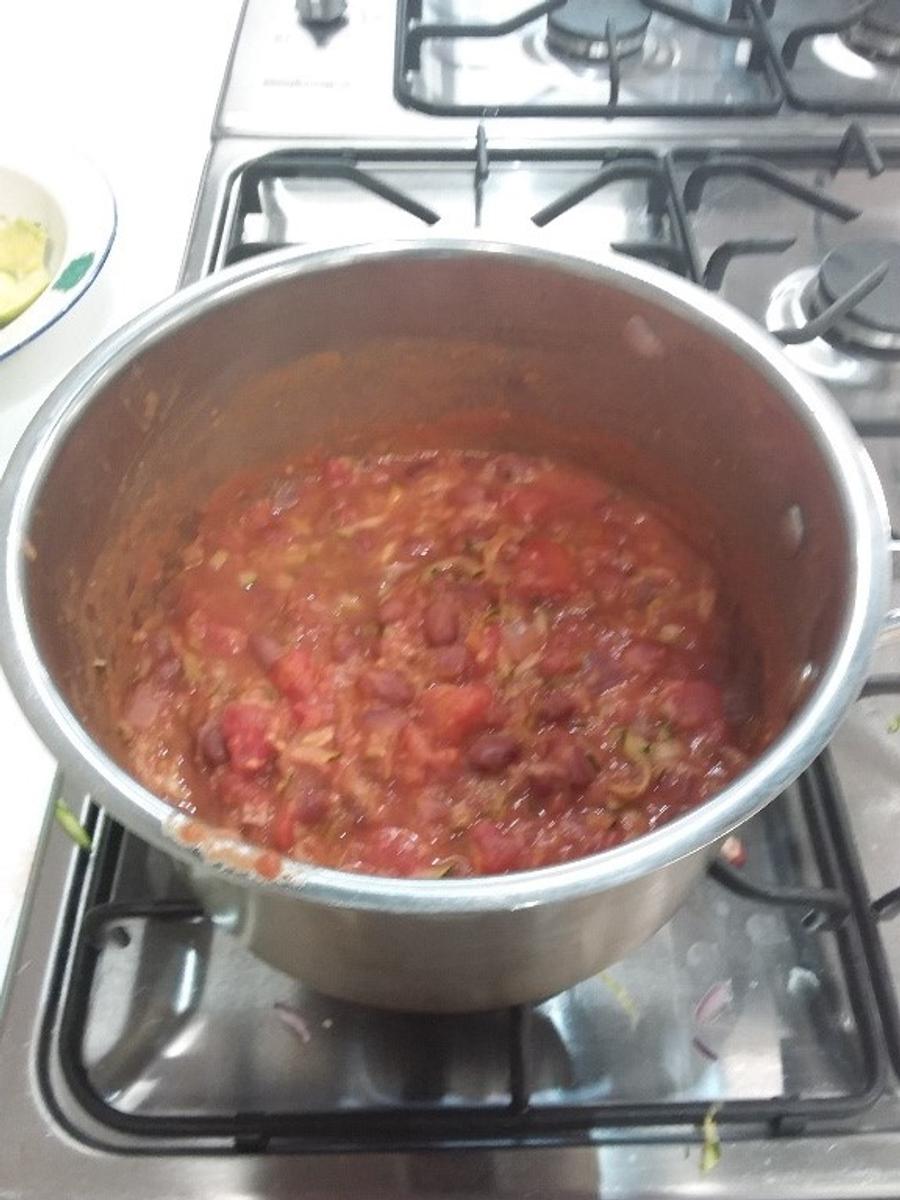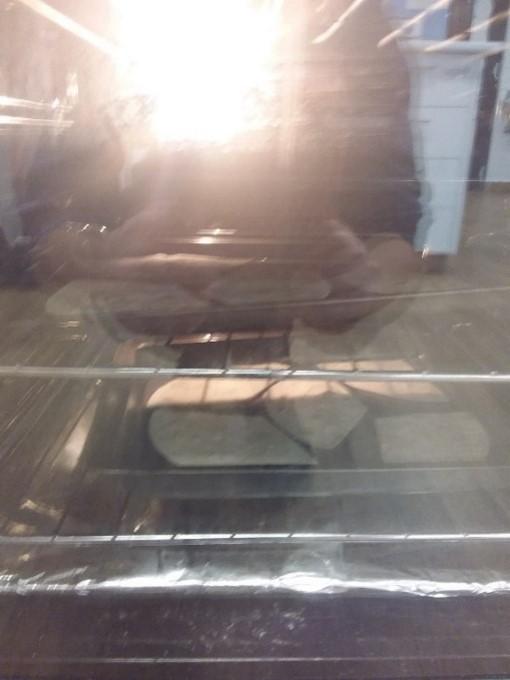YEAR 11 FOOD
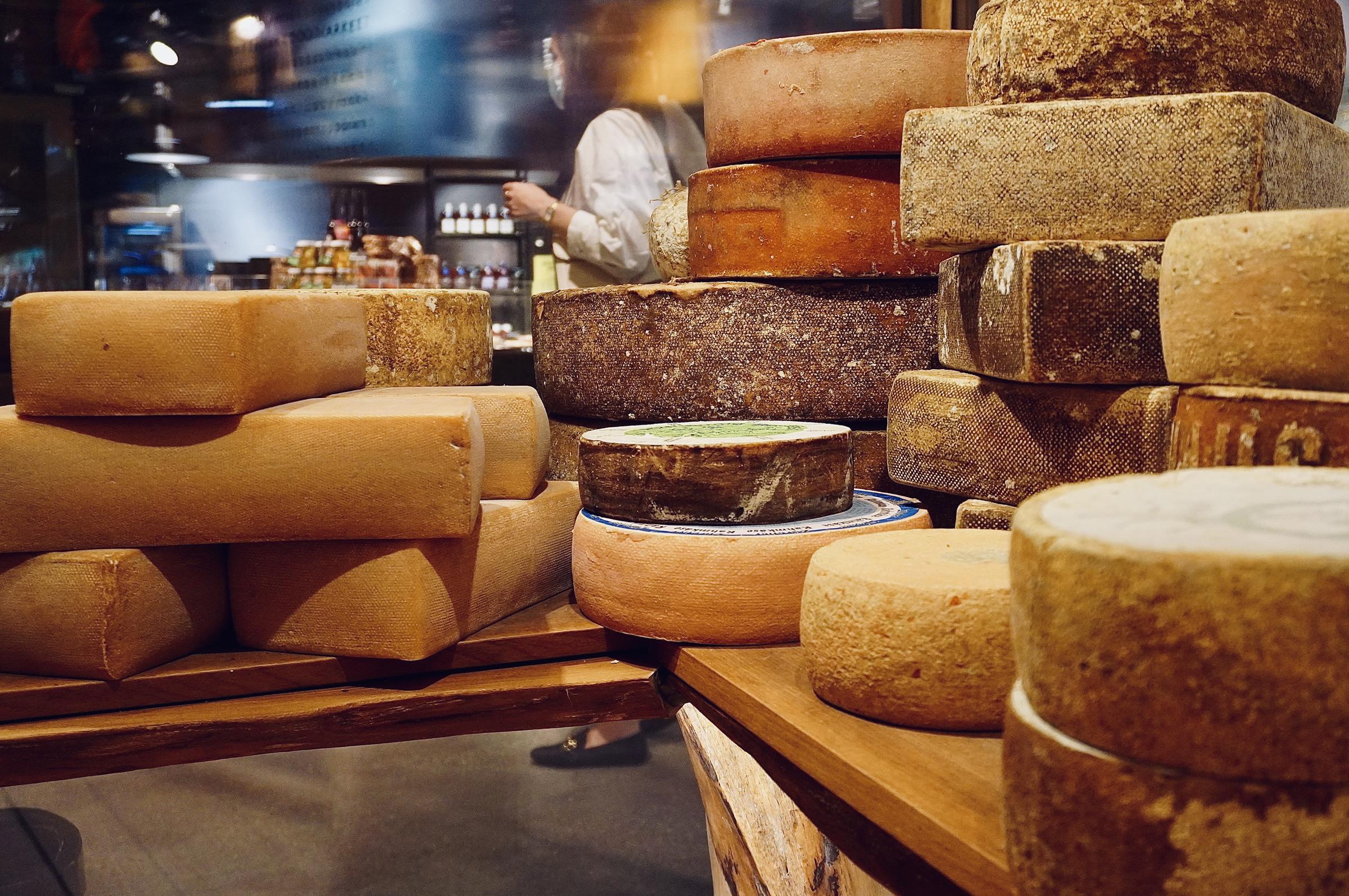
Cheese Making and Preserving Lemons
Students in Unit 1 Food Studies have been looking at Food Origins including the early development of agricultural food systems including those that enabled the cultivation of wild plants and the domestication of animals for farming.
Some practical classes have included making cheese using goats milk and cows milk and comparing the texture, colour, taste and aroma.
Students looked at how to prepare jars and ways of preserving the cheese to allow it to last longer.
Preserving lemons using salt and lemon juice is something else students have completed and comparing it will a jar without salt to see the impact salt has on the preserving process of foods.
Unit 1 Food Studies – Distinctive Cuisine
Students researched a chosen region from around the world (excluding Australia) looking at the countries food systems and distinctive cuisine. Students chose a recipe from their chosen region that reflects the regions climate, weather, geography, history and religion. Students were required to work independently and prepare their dish within the 90 minute lesson and complete a reflection of their dish.
Ace Yasana – Thai Fried Rice or Khao Pad
The star of this dish is the rice, which is one of the main staples of Thailand’s agriculture. On top of being one of the largest exporters of rice. The rice is grown in Thailands humid and hot climate and has a rainy season between the months of June and October. Mainly grown in the Chao Phraya basin and the Khorat Plateau. Due to Thailand having the resources and conditions to grow rice it’s their main export helping grow Thailand’s economy. A part of Thai culture is the beautiful presentation of food. In Thai culture, the way the food is arranged on the plate affects how it is eaten. A beautifully designed plate respects the dish and demonstrates respect for the cuisine. Thai cuisine is renowned throughout the world for its excellent presentation.
Liam Thomas – Burrito Bowl
Climate – This dish reflects the climate and weather of Mexico by showing the available ingredients at the time of preparation and production. Mexico’s climate and weather is considered quite hot and humid and the ingredients within the Burrito bowl and that that survive and grow well in these such conditions.
Geography – The burrito reflects the geography of Mexico through the availability of ingredients and where and how they are grown. Mexico is has a range of geographical area and biomes. This allows the country to produce a range of ingredients, that are featured in the burrito bowl.
History – The Mexican burrito bowl features many historical ingredients such as rice and beans. The allows the Mexican Burrito bowl to reflect the historic standards of Mexico.
Religion – Through out many centuries Mexico has been known for there religious beliefs and celebrations. The Mexican burrito bowl is known as a altered traditional and religious recipe passed down from generates. Hence reflecting Mexico’s Religion.
Baklava by Marty
I chose the Baklava because I believe it is a beautiful representation of Turkey. Using wheat (for the pastry), nuts, butter (or an oil substitute), and sugar. I hypothesise that this dish would have been easily able to be made centuries ago. I made this dish because I knew it would be a challenge and I also love the middle eastern cuisine.
Climate-
Baklava was made in Turkey because it was a special treat and farmers would not have had wheat or sugar very often. The climate in Turkey involved the only river to overflow once a year, depositing nutrient rich soil on the river flats. This enabled the growth of crops and also enabled the earliest of agriculture to be born.
Weather
The weather of the Middle East is relatively humid and very hot most of the time, the baklava was a nice treat that farmers could make for their families. I believe that having a cool treat on a hot day is something that everyone wants.
Religious Factors
Majority of the main religions in Turkey are in fact Muslims. Muslims might have come up with a treat that didn’t involve anything that was illegal for the Islamic people.
Historical Factors
The pre-Ottoman roots of the baklava have led us to believe that the ancient Romans have made a dish that closely resembles that of the Baklava.
Geography
The geography of the fertile crescent is that they had the Tigris and Euphrates rivers nearby and once a year that would overflow. Another bit of geography is that Turkey looks a bit like a desert is some places and can look tropical in other places such as Karagol.
Aztec Tortilla bowl and Tortillas– Riley McIntosh
Climate
The Aztec tortilla bowl is traditionally fried, which is a cooking technique that is commonly used in Mexican cuisine. Frying is a quick and easy way to cook food in hot climates and is also a way to preserve food for longer periods of time.
Weather
the Aztec tortilla bowl reflects the weather factors of Mexico through the use of crops that thrive in hot and humid weather conditions, The dish also takes into account the varying altitudes of Mexico at higher altitudes, the air is thinner and pressure is lower, which can affect the cooking time and technique used for the dish.
Geography
Mexico has a diverse geography, ranging from coastal regions to mountains and deserts. As a result, different regions have developed their own unique cuisines and variations on the Aztec tortilla bowl.
Religion
The Aztecs used food as offerings in their religious rituals, and the tortilla bowl may have been used in this way as well. The bowl shape and the ability to hold fillings may have made it a convenient vessel for offerings or as part of a ritual feast.
History
the Aztec tortilla bowl reflects the historical factors of Mexico through its origins as a traditional indigenous dish, the impact of the Spanish conquest on Mexican cuisine, and the blending of indigenous and Spanish cultures during the colonial period. The dish also reflects modernization and changing lifestyles in Mexico over time.

